This post is also available in:  Deutsch (German)
Deutsch (German)
The alarm clock rings at 6:00. Today I get up an hour earlier than usual. I look out the window. Right in front of the ship are lights. I look at the map on my smartphone. On the right is Tenerife, on the left Gran Canaria.
I quickly get dressed and go up to the bridge. It is still dark. After all, this is shortly after five local time. In the dark, I recognize the Chief Officer sitting in front of a radar screen, greet him and then go outside to the balcony to the right of the bridge.
Like the stars above us, the lights of Tenerife sparkle on the horizon. Only from time to time, a more aggressive light flashes over to us. It is the lighthouse at the northern tip of the island.
I go over to the balcony left of the bridge. Gran Canaria is a little further away. The light shimmers only slightly behind the horizon. Two lighthouses flash over from there.
The scorpion, my favourite constellation, has risen in the East. I look north, find the Big Dipper and then Polaris. Soon I will have to say goodbye to Polaris. In return, I will have the Southern Cross, the constellation that always tells me that I am at home.
I go back to the bridge. In the meantime, the captain has also come up. He measures the distances between us and the islands on the radar screen. Tenerife is eleven nautical miles away, Gran Canaria twenty. There are, except for a ferry between the two islands, no other ships on the way.
At seven o’clock everyone suddenly looks at their mobile phone. We have reception. My WhatsApp keeps ringing. Almost 200 messages have accumulated in the last few days and are now arriving on my phone. I am happy and read the messages. I can be alone well, but the contact to the outside world and to the people I love most is also important to me and fills me with joy.
It is time for breakfast. Today I don’t stay as long as usual with Pierre to have a cup of coffee. It dawns, soon the sun will rise. I want to go to the bridge again. It’s time for my sunrise photo.
But first, the most important thing. Anita is already awake, has already tried to call. We talk on the phone. It’s so great to hear her voice.
Outside it is shortly before sunrise. Tenerife and Gran Canaria are in a haze, and I can see only their outlines. Only the Pico del Teide rises above the haze. The sun already illuminates its peak.
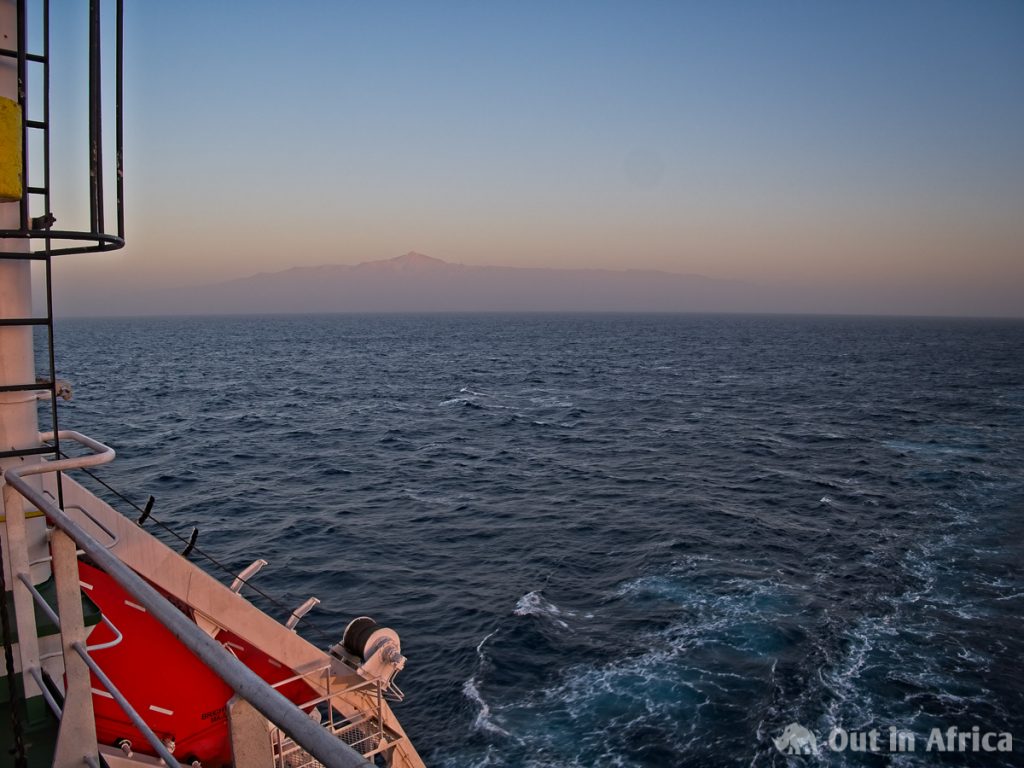
They are bulky islands that rise suddenly out of the ocean. The Pico del Teide is 3718 m high, the highest mountain in Spain.
The sun rises in dark orange. There is no cloud in the sky. Her rays soon outshine the contours of Gran Canaria. The island is no longer visible.
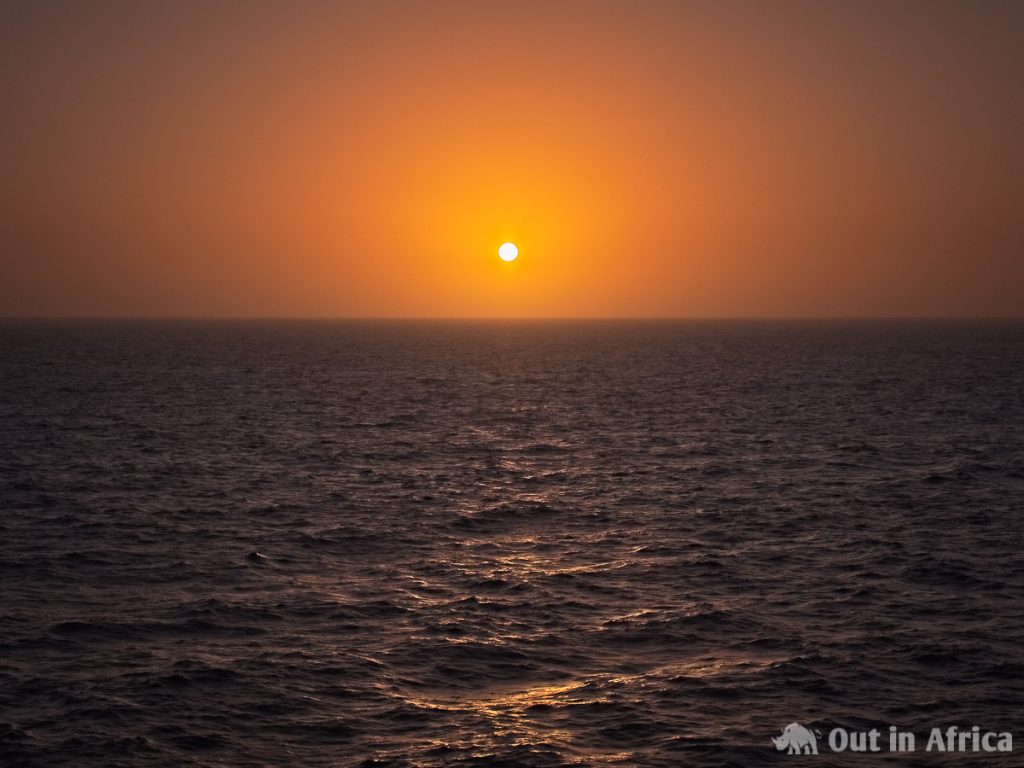
I want to talk to Anita again to say goodbye to her, but the mobile network has suddenly died. From full reception to nothing in a few minutes. Too bad, I would have liked to hear her voice again. Now, all we have left is the satellite phone.
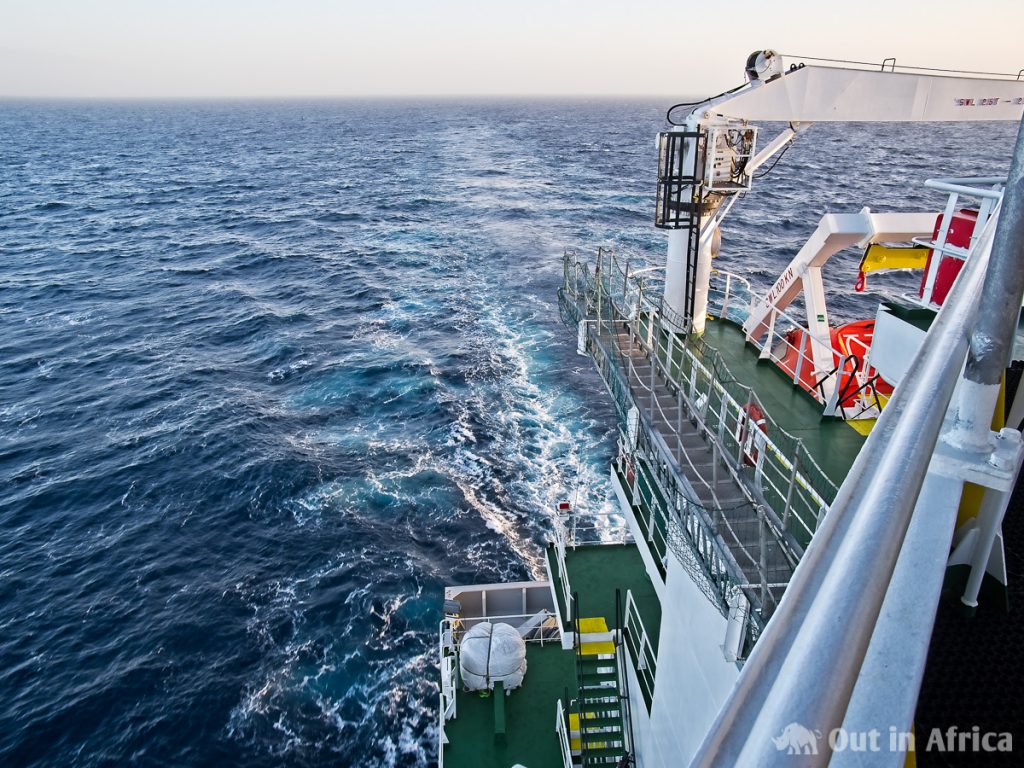
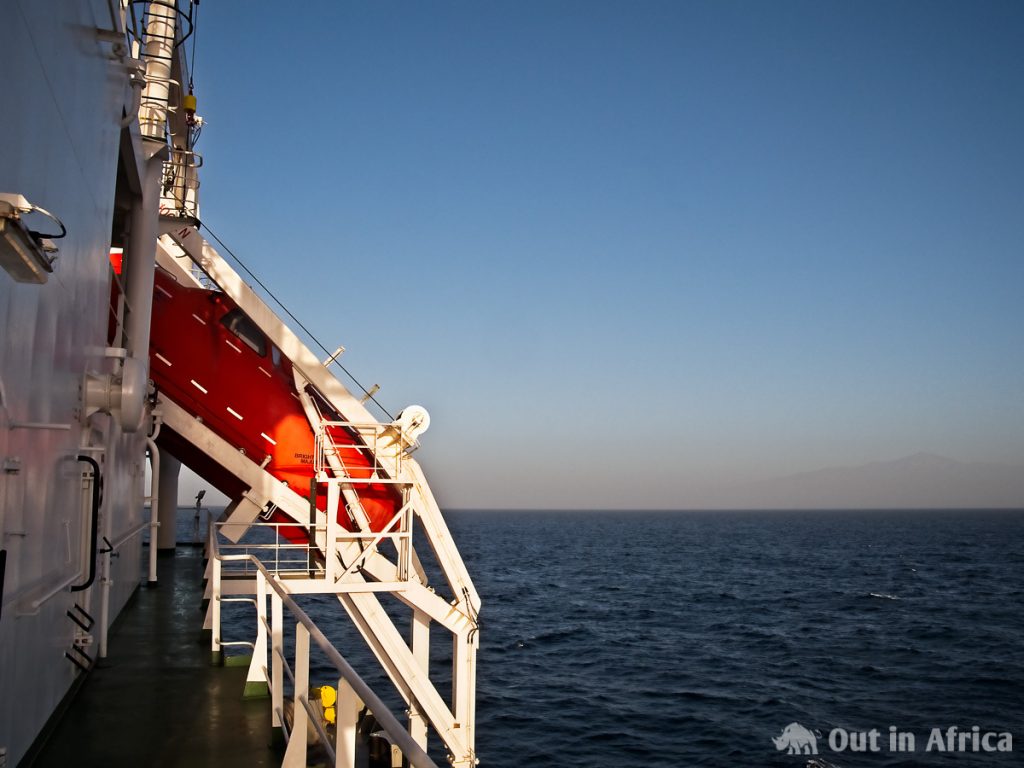
I look for a long time at Tenerife and the Pico del Teide. Later I get one of the deck chairs outside and watch how the summit slowly disappears into the haze.
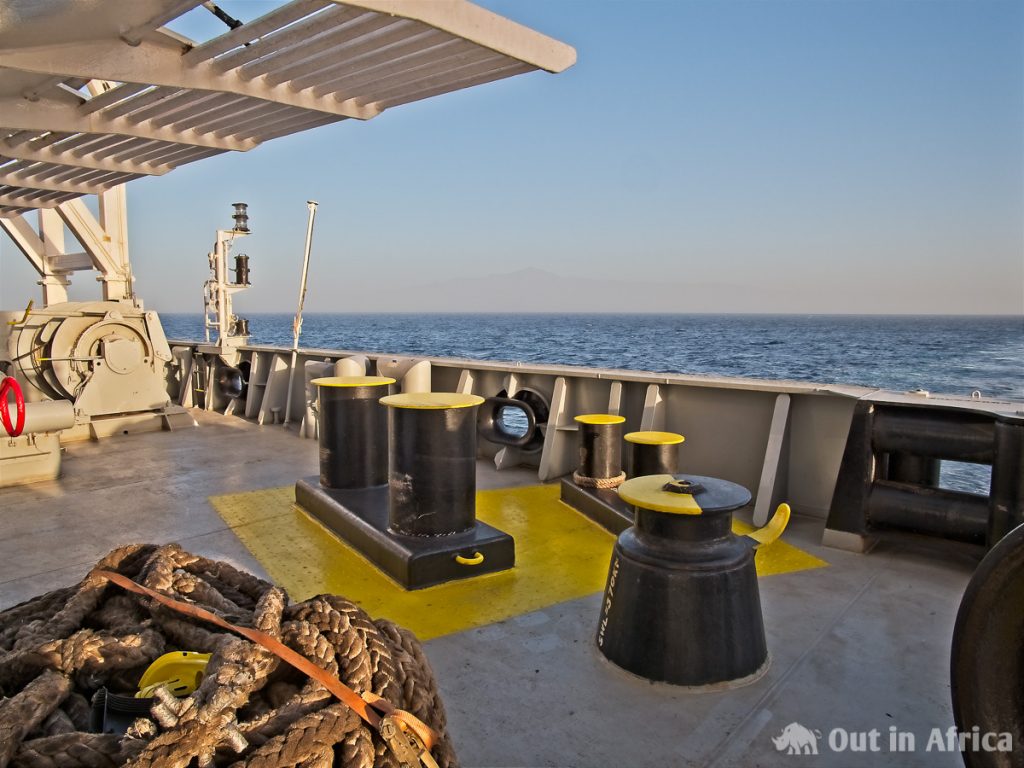
Now, all we have is the sky, the sea and the ship.
The sailors are already working hard. Yesterday they cleaned a large area of rust and painted the blank spaces with red paint. Now the Flex is back in action. Today, the railing and the sidewalls of the cargo hold are next.
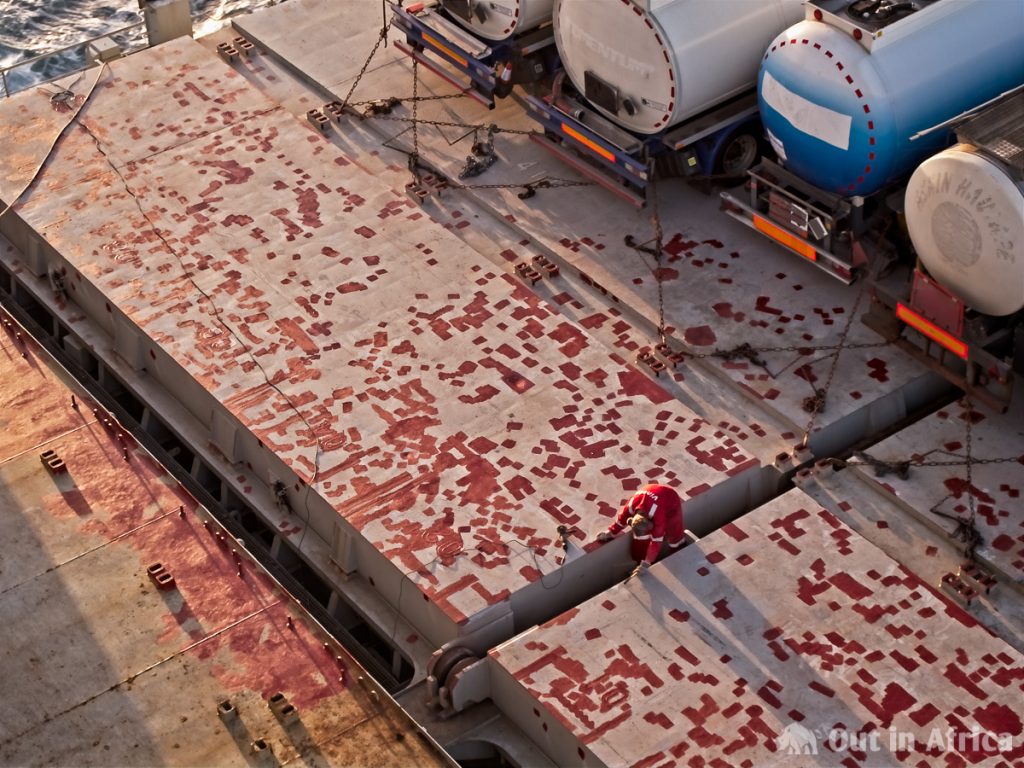
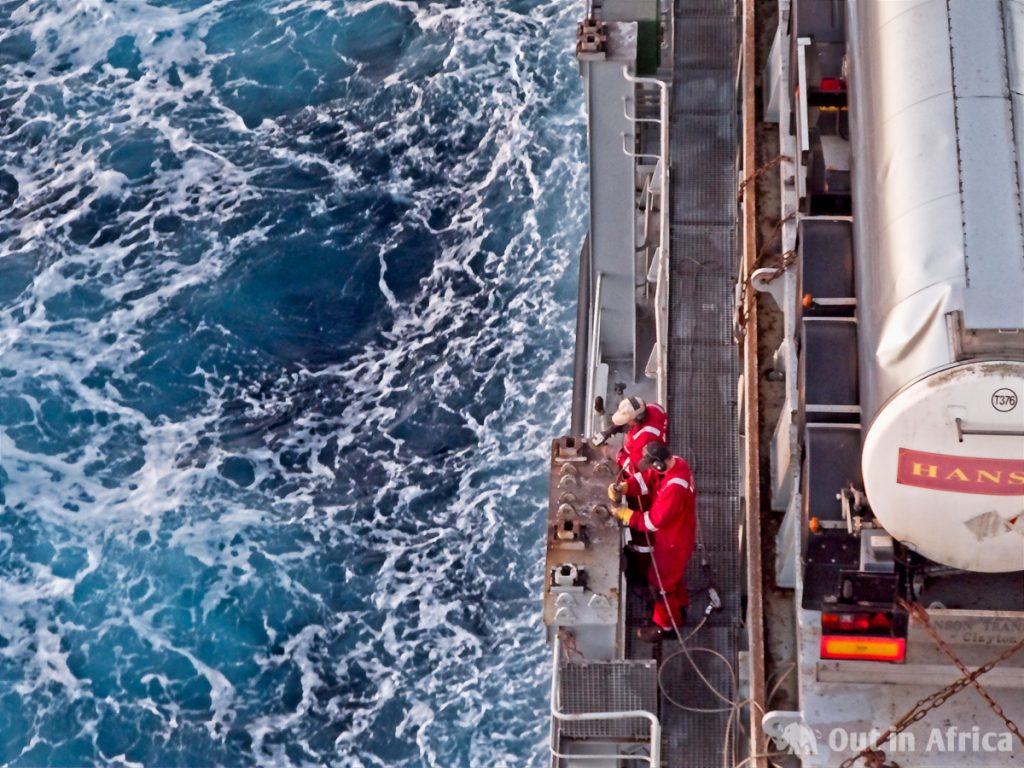
The captain told us the ships will last for 15, maybe 20 years. Every five years, they have to undergo a general overhaul. After 15 or 20 years this general overhaul is too expensive. Then the ship is scrapped or sold to any companies that do not want to dock in the ports of the civilized world.
The wind now comes from the east. We cannot see Africa, but we can feel it. The dust of the Sahara sticks everywhere, and when I grip the railing, it has a surface like very fine sandpaper.
At lunch, I extend my, actually excellent, geography knowledge. I now know where the Marshall Islands are: in the middle of the Pacific Ocean. The captain says there are a few rocks in the ocean on which a few hundred people live. “I’m sure they all work in the ship registration office,” I say. He looks doubtfully. Is the Marshall Islands Ship Registration Authority even on the Marshall Islands?
We talk about the fact that nowadays only a few merchant ships sail under European flags. The costs are too high. In the past, ships were registered in Liberia; today, it is the Marshall Islands. This small island state has copied its shipping laws one to one from the American laws together.
If a ship is registered under the Marshall Islands, there are other advantages in addition to lower costs. I had already learned in the first week in Hamburg that a ship flying the German flag is German territory and therefore requires a German captain (or at least one with EU citizenship). The Marshall Islands are not so particular about that. Anyone with a captain’s patent can be a captain. I’m not saying that the German captain’s license is better than any other. My impression of our Polish captain is that he is an intelligent and competent captain.
And just because a ship was registered in the Marshall Islands doesn’t mean it’s a bad ship. To be able to dock in European ports, it must meet the requirements of German Lloyd. It is overhauled just as often as European ships.
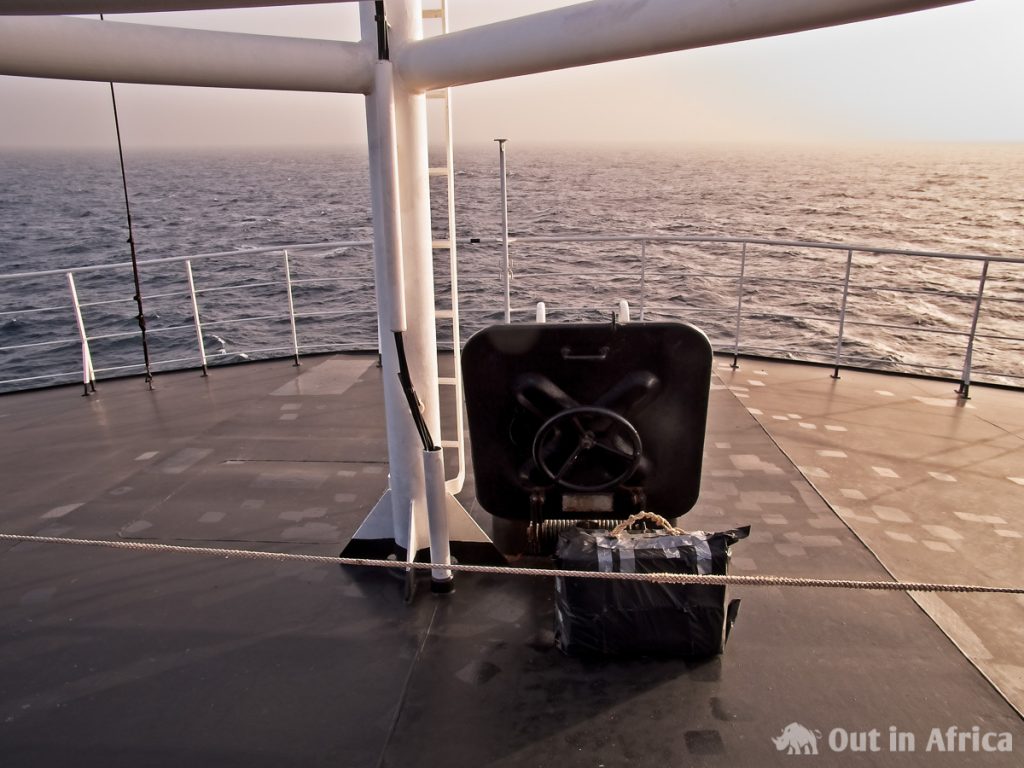
The captain had the hatch to the balcony of the front deck opened. After dinner, I go to the front. I meet the captain and his wife sitting on two large bollards talking. I should go upstairs, he says. It is still very windy, but if the wind came from behind, it would be the most peaceful place on the whole ship.
I climb up the ladder. The floor of the balcony is slightly sloped forward. After all, it’s also the roof of the deck below. But it is not too steep, and in front, there is a sturdy railing, just the right height for me to lean forward and look at the water.
It is the most beautiful place on the whole ship, even with the wind blowing in the wrong direction. It is the only place where you can watch the sea without turbulences. Yes, Leo on the Titanic was right: It’s like flying over the water.
I stand about 12 m above the waterline and look at the waves coming towards me and disappearing under the ship. But the wind is quite strong, the waves are a bit bigger again, with white spray on the crests. On the waves, there are waves yet, where the wind ripples the water.
The spray forms a haze – not as thick as fog yet, but today we won’t see any sunset. The haze also has a yellow-brown tint. It is the sand of the Sahara which the wind blows over to us.
I stand there for half an hour looking at the water. From time to time, I look up. I take a close look at every wave crest that moves differently. Is that perhaps a fin or a fluke? But no, it’s just the water and the wind.
The balcony on the bow of the ship is going to be my new favourite place.
The sun goes down, and I walk back to the ship’s building.
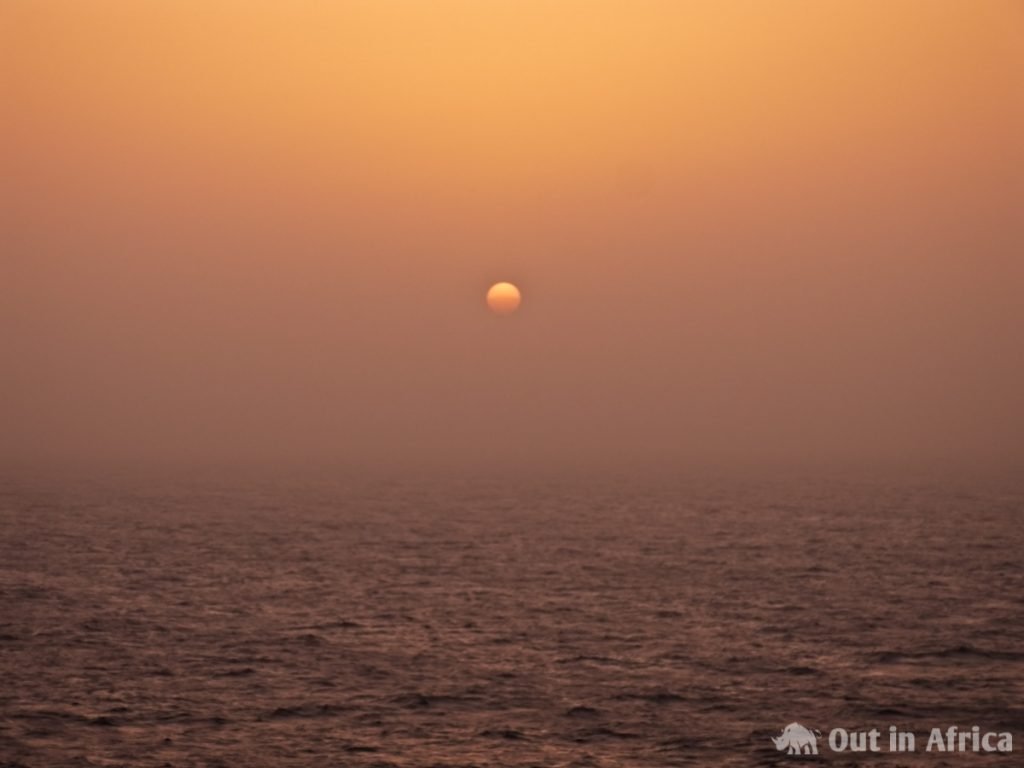
At dinner, I’ll give Scott Kelly’s book back to the captain. He gives me a USB stick. On it are videos related to the book. I’m looking forward to putting it straight into the TV and watching the videos.
At midnight we are at N24° 14.083′ W17° 23.687′.
We are 80 km from the Tropic of Cancer and 153 km from the coast of Africa.
Namibia is getting closer and closer. In 10 days we will arrive in Walvis Bay. That makes me a little sad. At the moment, I don’t want this journey to end. I hope that I will be ready in 10 days.
Would you like to see an overview of all articles about my journey on the cargo ship Bright Sky? Click here for a table of contents.
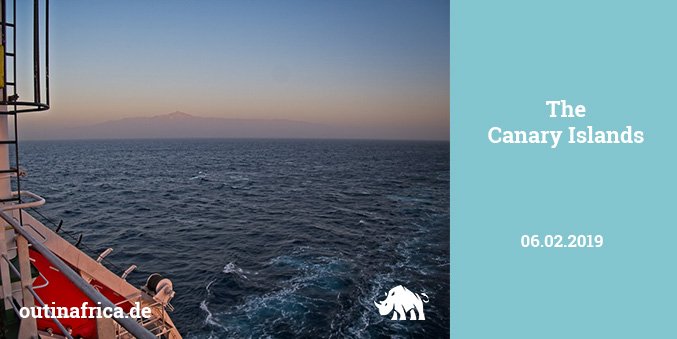
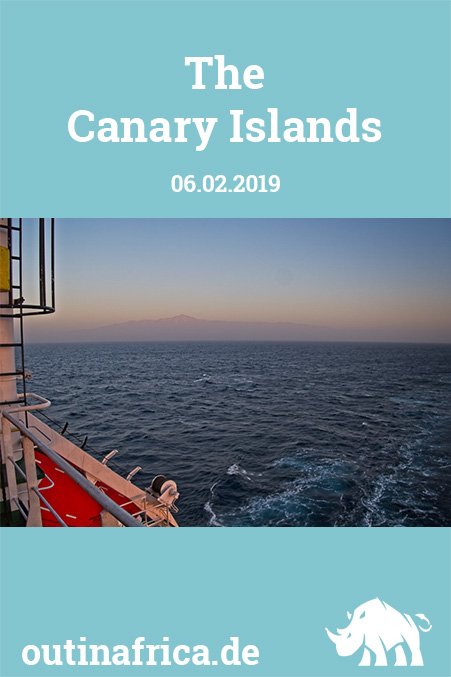

Leave a Reply